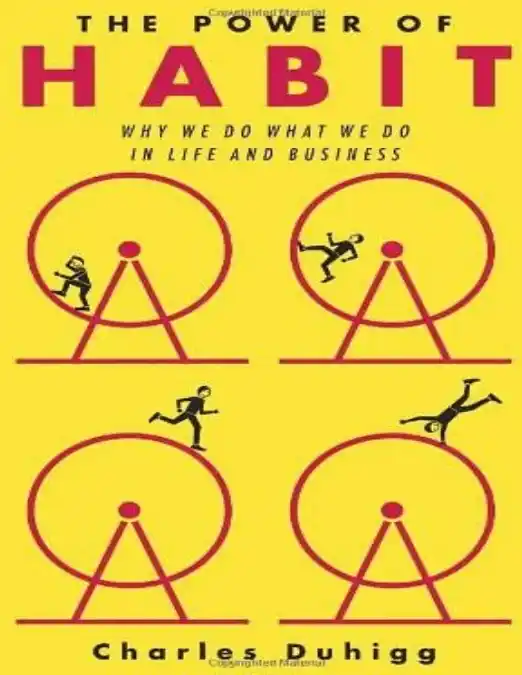
When a habit emerges, the brain stops fully participating in decision making. It stops working so hard, or diverts focus to other tasks. Unless you deliberately fight a habit—unless you find new routines—the pattern will unfold automatically. However, simply understanding how habits work—learning to recognize the cues and rewards that drive them—makes them surprisingly easier to control. Once you break a habit into its components, you can fiddle with the gears.
“The Power of Habit: Why We Do What We Do in Life and Business” by Charles Duhigg explores the scientific understanding of habit formation and provides practical insights into how habits can be changed, replaced, or created. The book is structured around a central thesis: habits operate in a three-step loop — cue, routine, and reward. This “habit loop” is the backbone of Duhigg’s analysis throughout the text.
Duhigg begins by examining individual habits, explaining how they function neurologically. When we first perform an action, our brains work hard, processing lots of information. However, as behaviors become automatic, mental activity decreases as the brain converts sequences of actions into automatic routines. This process, called “chunking,” is at the root of habit formation. Crucially, Duhigg explains that habits never truly disappear — they are encoded into the structures of our brain. This is why breaking habits is so difficult.
The book introduces “the golden rule of habit change” — the idea that you cannot extinguish bad habits, only replace them. The most effective way to shift a habit is to keep the same cue and reward but change the routine. This framework has been successfully applied to treating alcoholism, overeating, and other destructive behaviors.
Duhigg then expands his analysis to organizational habits. He demonstrates how habits within companies and organizations can lead to both success and failure. Through case studies like Alcoa and Starbucks, he shows how “keystone habits” — those that trigger widespread change — can transform entire organizations. At Alcoa, CEO Paul O’Neill’s obsessive focus on worker safety became a keystone habit that ultimately improved quality, productivity, and profitability across the company.
The book also explores how organizations exploit habits for commercial gain. Duhigg details how Target identifies pregnant customers through their purchasing habits to send them targeted advertising before they’ve announced their pregnancy. This section highlights how companies study, predict, and attempt to influence consumer habits.
The third section examines societal habits and social movements. Duhigg analyzes how habits influenced the success of the civil rights movement, focusing on the Montgomery bus boycott. He explains how social habits rely on “weak ties” — relationships between acquaintances rather than close friends — and how peer pressure and “social proof” drive collective habits.
Throughout the book, Duhigg emphasizes that while habits are powerful, they’re not destiny. Awareness is the first step to changing habits. By recognizing the cues and rewards driving automatic behaviors, we gain power over them. The book provides a framework for experimenting with rewards, isolating cues, and developing plans to change routines.
Perhaps most importantly, Duhigg discusses the role of belief in habit change. Lasting habit change often requires believing that change is possible, which is why communities like Alcoholics Anonymous can be effective — they foster belief through group support.
The Power of Habit combines rigorous science with compelling narratives to offer a comprehensive understanding of how habits shape our lives and how we can shape our habits. It provides readers with practical tools to identify and modify the routines that govern much of our behavior, whether at an individual, organizational, or societal level.